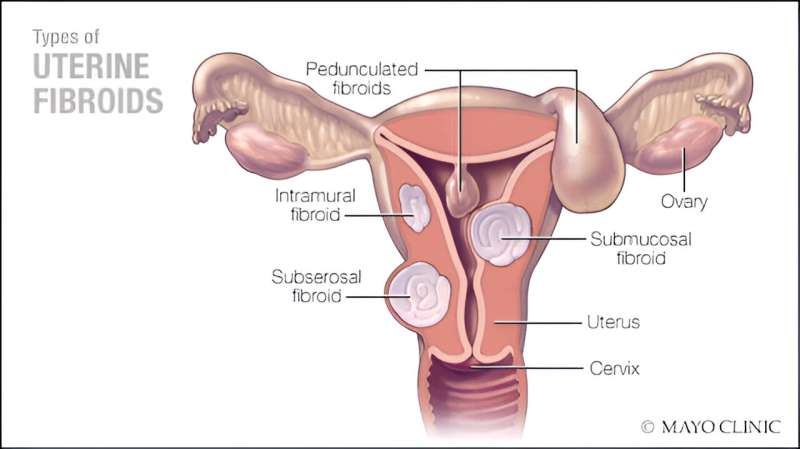This article has been reviewed according to Science X's editorial process and policies. Editors have highlighted the following attributes while ensuring the content's credibility:
fact-checked
trusted source
proofread
Study compares surgical treatment options for uterine fibroids

In a recent study, Mayo Clinic researchers compared the cost-effectiveness of surgical treatments for uterine fibroids, suggesting that the less invasive option may relieve symptoms without as high a price.
Historically, hysterectomy has been the most common surgical treatment for uterine fibroids, a condition that affects 70%–80% of premenopausal women, but another procedure is available. Unlike a hysterectomy, which removes the entire uterus, a myomectomy removes only the fibroids, leaving the uterus intact.
The study compared myomectomy to two versions of hysterectomy, one where the ovaries remain and another where they are removed. A myomectomy provided a more cost-effective option to patients overall. The work is published in the Journal of Minimally Invasive Gynecology.
The researchers used a mathematical model to simulate the health outcomes of 10,000 40-year-old women in the U.S. They estimated the odds of coronary artery disease associated with each treatment, then weighed this risk against the cost of surgery and the improvement in quality of life.
Even though uterine fibroids can recur after myomectomy, the data revealed that this option provided the same benefits as a hysterectomy at a lower price. Previous research has shown that treating uterine fibroids with a hysterectomy increases the chance of coronary artery disease by as much as 33% compared to a myomectomy.
Even with these findings, treatment is not a one-size-fits-all scenario, cautions Viengneesee (Vee) Thao, Ph.D., M.S., lead author of the study, who adds that creating a plan with a physician is crucial.
"Deciding whether to get a hysterectomy involves more than just the risk of coronary artery disease," explains Dr. Thao. Choosing between treatments depends on a range of factors, she says, including the desire to have children in the future and symptom severity.
About a quarter of women with uterine fibroids experience heavy menstrual bleeding, pelvic pain and pregnancy complications. Although medications like non-steroidal anti-inflammatory drugs or hormonal therapy may help manage symptoms, some women may require more aggressive treatments.
Even after surgery, additional medications may still be necessary. "If you have your uterus and ovaries removed," notes Dr. Thao, "it usually involves other treatments, such as estrogen replacement therapy."
With myomectomy, the fibroids can come back, which is often painful. Dr. Thao encourages patients to speak with their physician about what to do if this happens.
According to the researchers, future cost-effectiveness studies should evaluate the risks of mental illness, obesity and metabolic conditions after treatment, since all of these conditions are more frequent among women who have had a hysterectomy.
More information: Viengneesee Thao et al, Cost-effectiveness of Myomectomy versus Hysterectomy in Women with Uterine Fibroids, Journal of Minimally Invasive Gynecology (2023). DOI: 10.1016/j.jmig.2023.06.001



















